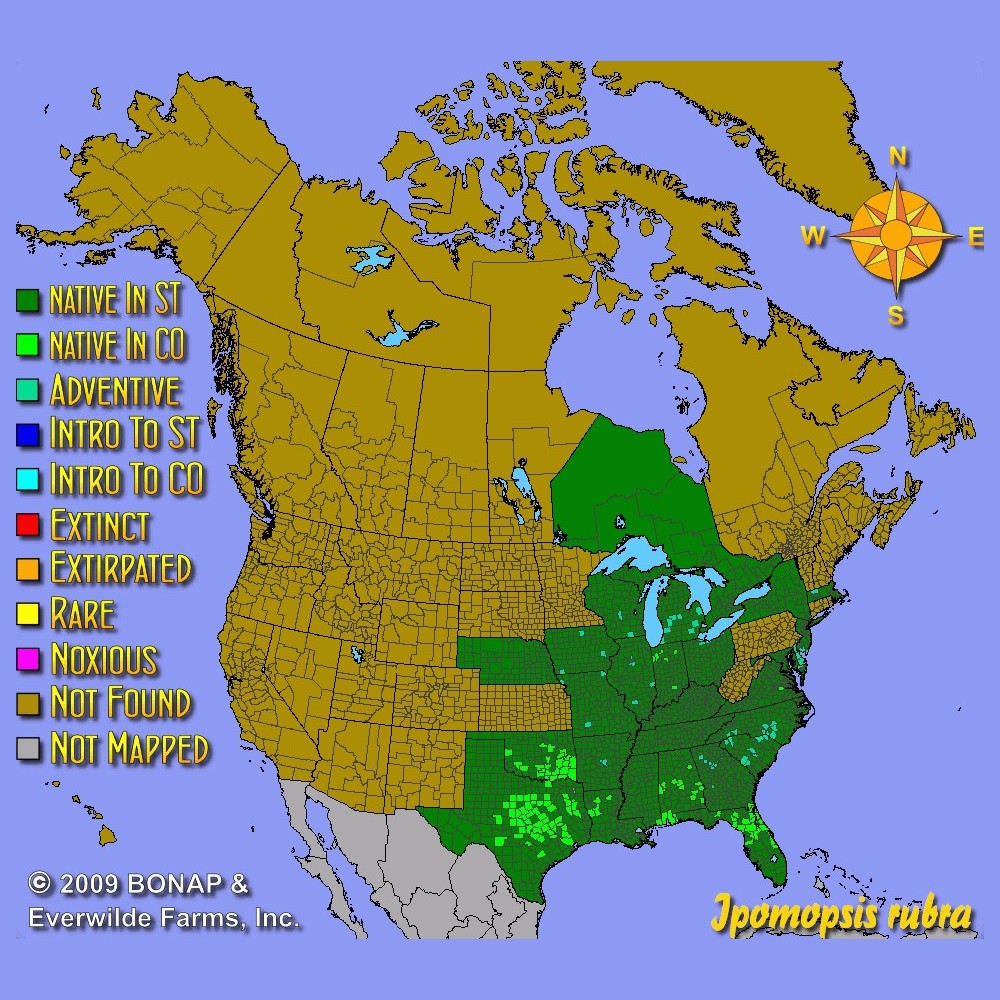Standing Cypress Seeds
Ipomopsis rubra
- HOW TO GROW
- FAST FACTS
HOW TO GROW
Sowing: Direct sow in fall, sowing just below the surface of the soil. For spring planting, start the seed indoors 6-8 weeks before the last frost; plant just below the surface of a flat in soil mixed with a high percentage of sand. Keep the soil temperature at 65-70 degrees F; germination should occur within 15-30 days. Transplant the seedlings when the soil has warmed; plant them as soon as possible, since they soon form a long tap root that does not appreciate being disturbed. Planting them in clusters will provide support for the developing stalks. Seedlings can also be started in late summer and transplanted in late fall for summer blooming in the next year.
Growing: This plant prefers dry, sandy, or rocky soil and tolerates drought well; soil that does not drain well or remains too moist usually causes root rot and other disease. Because this plant is a biennial, it usually produces a low rosette in its first year and a blooming stalk in its second year; the tall spikes can tend to sprawl and may need support or staking. Removing the spent flower spike causes a second bloom. This plant self-sows readily and can establish itself as a perennial in good growing conditions. Bees and hummingbirds are strongly attracted to this plant.
Harvesting: For fresh flowers, cut long stems of flowers that have just opened and place them in water immediately; strip the leaves that will fall below the water.
Seed Saving: At the end of the season, the flowers will mature to form dry and papery seed heads; check them often, since the tiny seeds can easily fly away on the wind. Shake the clusters of seed heads over a container to remove the tiny white seeds. Store the cleaned seed in a cool, dry place.
FAST FACTS
Common Names: Scarlet Gilia
Latin Name: Ipomopsis rubra
Species Origin: US Native Wildflower
Type: Native Wildflowers
Life Cycle: Biennial
USDA Zones: 3, 4, 5, 6, 7, 8, 9
US Regions: California, Mountain, Arid/Desert, Plains/Texas, Midwest, Northern, Northeast, Southeast
Seeds per Ounce: 23,000
Stratification: No Stratification
Germination Ease: No Stratification
Sunlight: Full Sun, Part Sun
Height: 60 Inches
Color: White, Red
Bloom Season: Blooms Early Summer, Blooms Late Summer
DESCRIPTION

HOW TO GROW
Sowing: Direct sow in fall, sowing just below the surface of the soil. For spring planting, start the seed indoors 6-8 weeks before the last frost; plant just below the surface of a flat in soil mixed with a high percentage of sand. Keep the soil temperature at 65-70 degrees F; germination should occur within 15-30 days. Transplant the seedlings when the soil has warmed; plant them as soon as possible, since they soon form a long tap root that does not appreciate being disturbed. Planting them in clusters will provide support for the developing stalks. Seedlings can also be started in late summer and transplanted in late fall for summer blooming in the next year.
Growing: This plant prefers dry, sandy, or rocky soil and tolerates drought well; soil that does not drain well or remains too moist usually causes root rot and other disease. Because this plant is a biennial, it usually produces a low rosette in its first year and a blooming stalk in its second year; the tall spikes can tend to sprawl and may need support or staking. Removing the spent flower spike causes a second bloom. This plant self-sows readily and can establish itself as a perennial in good growing conditions. Bees and hummingbirds are strongly attracted to this plant.
Harvesting: For fresh flowers, cut long stems of flowers that have just opened and place them in water immediately; strip the leaves that will fall below the water.
Seed Saving: At the end of the season, the flowers will mature to form dry and papery seed heads; check them often, since the tiny seeds can easily fly away on the wind. Shake the clusters of seed heads over a container to remove the tiny white seeds. Store the cleaned seed in a cool, dry place.
FAST FACTS
Common Names: Scarlet Gilia
Latin Name: Ipomopsis rubra
Species Origin: US Native Wildflower
Type: Native Wildflowers
Life Cycle: Biennial
USDA Zones: 3, 4, 5, 6, 7, 8, 9
US Regions: California, Mountain, Arid/Desert, Plains/Texas, Midwest, Northern, Northeast, Southeast
Seeds per Ounce: 23,000
Stratification: No Stratification
Germination Ease: No Stratification
Sunlight: Full Sun, Part Sun
Height: 60 Inches
Color: White, Red
Bloom Season: Blooms Early Summer, Blooms Late Summer






